The Spruce Grouse population in New York State is shrinking to near oblivion and the New York State Department of Environmental Conservation is on the case. Overall, the species is not in danger, as there are large and robust populations further north. While I want to see a Spruce Grouse in New York some day in order to increase my (meaningless) New York State list I have to question any decision to spend lots of money to support a population in the state when there are actual endangered species that could use help.
Recent Posts
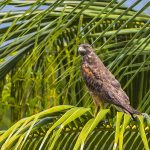 Hawk ConundrumBy Faraaz Abdool
Hawk ConundrumBy Faraaz Abdool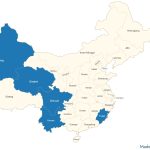 China – Profile for BirdersBy Kai Pflug
China – Profile for BirdersBy Kai Pflug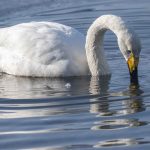 Ask a Bird Guide: What’s the most surprising or memorable reaction you’ve seen from a guest while birding?By Editor
Ask a Bird Guide: What’s the most surprising or memorable reaction you’ve seen from a guest while birding?By Editor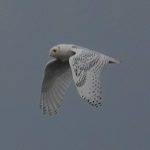 Snowy Owl Chase in OregonBy Hannah Buschert
Snowy Owl Chase in OregonBy Hannah Buschert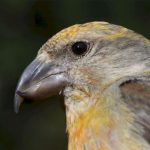 Book Review: Crossbills and Conifers: One Million Years of Adaptation and Coevolution By Craig W. BenkmanBy John Hague
Book Review: Crossbills and Conifers: One Million Years of Adaptation and Coevolution By Craig W. BenkmanBy John Hague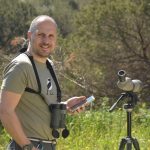 Bird Guides of the World: Spyros Skareas, Athens, GreeceBy Editor
Bird Guides of the World: Spyros Skareas, Athens, GreeceBy Editor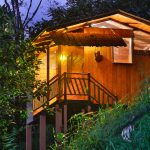 Birding Lodges of the World: Copalinga Lodge – Reserva Copalinga, EcuadorBy Editor
Birding Lodges of the World: Copalinga Lodge – Reserva Copalinga, EcuadorBy Editor
Posting Calendar
| DAY | WRITER(S) | SERIES (weekly) |
|---|---|---|
| MON | Kai (w) | Birding Lodges |
| TUE | Donna (m) Susan (m) Hannah (m) Fitzroy (m) Grace (m) | Bird Guides |
| WED | Leslie (bw) Faraaz (bw) | Ask a Birder |
| THU | Paul (w) Cathy (bw) | Birder’s Lists |
| FRI | David (w) | Species Spotlight |
| SAT | Peter (bw) Luca (bw) | From the Archives |
| SUN | Clive (w) Sanjana (m) | Three Photos |
| w weekly, bw biweekly, m monthly | ||
| Any time: Jason, Mark, John, Sara, Rolf, Dragan | ||
See here for info on the writers.
Newsletter
Signup and receive notice of new posts!
Thank you!
You have successfully joined our subscriber list.






What species are you thinking of Corey?
For birds, the Piping Plover could always use more help. As for non-birds, the Karner Blue Butterfly probably tops the list of species in New York. I am sure that some of our plants and mollusks could use some help too, but I know nothing about them.
Here is the state list of endangered and threatened species. There are some that are just not in trouble globally that it seems wasteful to spend scarce resources on when they are doing well elsewhere.
Hmmm…I wonder how much leeway New York has in using state funds to deal with listed species outside of state lands. I would guess it is limited (but I have no idea, really). Federally listed species, like the plover (I don’t know about the butterfly) are dealt with by the Fish and Wildlife Service who, as far as I know, have almost no way of receiving funds directly from a state government. I certainly see your point but I think picking and choosing what species go locally extinct sets a very dangerous precedent…I don’t think it is wise to simply throw in the towel for any native.
You’re probably right but I just can’t see spending the cash needed to do a Spruce Grouse reintroduction program, especially considering the long-term prospects of the species doing well in the state and the budget cuts that the state DEC has been hit with. Ah well, here’s hoping that somehow a giant pot of money falls from the sky and everything can be properly conserved…
I’ve been baffled by the same thing here in Michigan. We’ll send out teams of botanists to attempt to locate and document a plant on this side of the border when it’s thriving in its natural range in central Indiana and Ohio. I suppose my disdain for artificial lines on a map (the reason I’ve only now begrudgingly started state and county bird lists) is at fault here, though I also question the use of valuable funds to do this.
I suppose one way of seeing a bright side – a very bright side – is that any study of Spruce Grouse decline is most likely going to point to habitat loss (sadly, don’t they always) and that should lead to efforts to preserve more land. That approach is never a waste, as land that is favorable to Spruce Grouse is also favorable to thousands of other valuable organisms. Now, if the study leads to a targeted effort like reducing a predator population or something like that, I’d be hard-pressed to call it anything but a waste of resources. Outlying populations of a species rank just above individual animals in terms of conservation value, that is to say: personally satisfying, but comparatively insignificant given the presence of grander threats to ecosystems in their entirety. Luckily in these enlightened days, nearly every conservation effort involves ecosystem conservation.
I think the real question is why spruce grouse are declining in New York state. The answers to that question may well be more important than the spruce grouse itself, since the bird is doing well elsewhere. Habitat loss is almost certainly a cause. Could climate change also be a factor? I’ve seen these birds, admitedly years ago, in the Adirondacks. Are they declining there as well? There’s plenty of habitat there for them but if they are in substantial decline there, too, perhaps the reason is something else and something that should be investigated.
habitat loss or more?
with the dramatic comeback of the hawk and falcon come stresses for foxes and coyotes competing for foods.. mallards in many northeast locations have had breeding populations shredded as foxes/coyotes killed virtually all genetically best programmed ducks. very few if any mallards are producing ducklngs even in wonderfully secluded former habitats as predation has skyrocketed. the wood duck is better equipped to survive.
all ground birds (and many airborne) must suffer similarly. habitats can never return to levels of 100 years past, while at this same point in time predator populations are increasing . nothing can be done to save endangered birds
@carolynh: The Adirondacks is the only part of New York that has Spruce Grouse, so, yes, that is where they are declining.
@emma: Mallard numbers are up all over the northeast. I have no idea why anyone would think that they are not. Predation by native predators has never, so far as I know, even caused a localized extinction. The problem here is a historically small population that has become isolated and is not getting augmented from nearby populations.
@ Everyone – Why does everyone hate “outlyer” populations? Gosh. Where do you think things speciate from half the time?
@ Emma – There are so many Mallards everywhere that they are probably shredding coyote and fox populations.
Corey:
we have adult mallards but NO ducklings. not for many years.
I DID aee one wood duck family with 5 woodies and another with 10, the fives are still alive but the 10 have not been seen for two weeks. this might be due to snapping turtles. but interesting as in this habitat woodies never nested (over 30 years)
our mallard nesting females in a formerly ideal reproductive setting have been killed, interested folks became familiar with long term mallard nesters, they never migrated… regulars have seen remains of feathers strewn about waters edge mostly fall and winter. and most compelling we have no mallard ducklings for many years.
simply an observation from an area producing hundreds of ducklings (mallards) yearly over many many years. perhaps other northeast habitats are not experiencing such dramatic losses. (in ducklings). then produce the locations, please.
INCREASING predation may never be the sole cause of extinction, but stresses as those increase burdens placed on survival.. particularly as numbers increase while habitat loss is irrevocable and shrinking. those with some niche (as sparrow and starling) will continue. counts not this year but 10 years hence are what I seek to determine …. there is always the force however of survival and genetic changes ensuing.
@Felonious Jive: I seem to have tapped into a wellspring of anger!
@emma: Anecdote is not evidence. To use hard numbers from New York State, from the 1980-85 Breeding Bird Atlas to the 2000-05 Breeding Bird Atlas the number of survey blocks with breeding Mallards increased by 27%. According to information from the Breeding Bird Survey breeding Mallards are twice as numerous now as they were in the 1980s and four times as numerous as they were in the 1960s. Throughout the 20th century the Mallard population exploded in North America, so that in 1907 William Webster Judd called it a “rare migrant” in Albany County, NY, a place where you would have a hard time finding a body of water without Mallards today. In the most recent edition of Bull’s Birds of New York it is noted that the Mallard “was almost unknown as a breeder until the beginning of the twentieth century. Numbers increased steadily until the 1950s, when a virtual population explosion began, which is continuing today.”
Corey,
In today’s economy I understand your concern about trying to
rescue one population of birds of a species that is not globally
threatened. I’m sure you are aware of the plight of the “rufa”
subspecies of Red Knot, the one we see on the US East Coast.
Have you seen the recent population figures, however? They are
shocking. There has been a decline of 85% in one human
generation. Even though populations of Red Knot are more robust
in Alaska, perhaps the West Coast, and the Old World, for birders
along the east coast of the United States, it’s impending extinction.
This will be our Eskimo Curlew.
It’s just so easy (for governments, for example) to say
“Oh well, you can’t see such and such a bird here. Why not just
travel a bit and see it there.” That may be appropriate for Spruce
Grouse, but it’s a dangerous game to play with Knots. I have cobbled together some more information about the Red Knot’s plight here.
http://birdsunwrapped.blogspot.com/2011/07/red-knots-in-big-bind.html